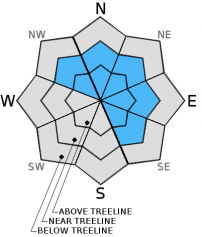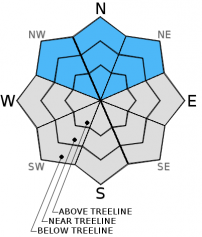| Thursday | Thursday Night | Friday | |
|---|---|---|---|
| Weather: | Mostly cloudy with some scattered showers. Snow levels around 7500 ft. | Partly cloudy becoming mostly cloudy with isolated snow showers. | Mostly cloudy with a slight chance of snow showers in the afternoon. |
| Temperatures: | 34 to 41 deg. F. | 24 to 31 deg. F. | 35 to 42 deg. F. |
| Mid Slope Winds: | Southwest | Variable | South |
| Wind Speed: | 15 to 20 mph with gusts to 30 mph | Light | Light increasing to 15 to 20 mph with gusts to 30 mph in the afternoon |
| Expected snowfall: | up to 2 | 0 | 0 |
| Thursday | Thursday Night | Friday | |
|---|---|---|---|
| Weather: | Mostly cloudy with some scattered showers. | Partly cloudy becoming mostly cloudy with isolated snow showers. | Mostly cloudy with a slight chance of snow showers in the afternoon. |
| Temperatures: | 29 to 36 deg. F. | 24 to 31 deg. F. | 29 to 36 deg. F. |
| Ridge Top Winds: | Southwest | Southwest | Southwest shifting to the south in the afternoon |
| Wind Speed: | 25 to 35 mph with gusts to 50 mph | 15 to 25 mph with gusts to 35 mph | 15 to 20 mph with gusts to 30 mph increasing to 25 to 30 mph with gusts to 45 mph in the afternoon |
| Expected snowfall: | up to 2 | 0 | 0 |

























